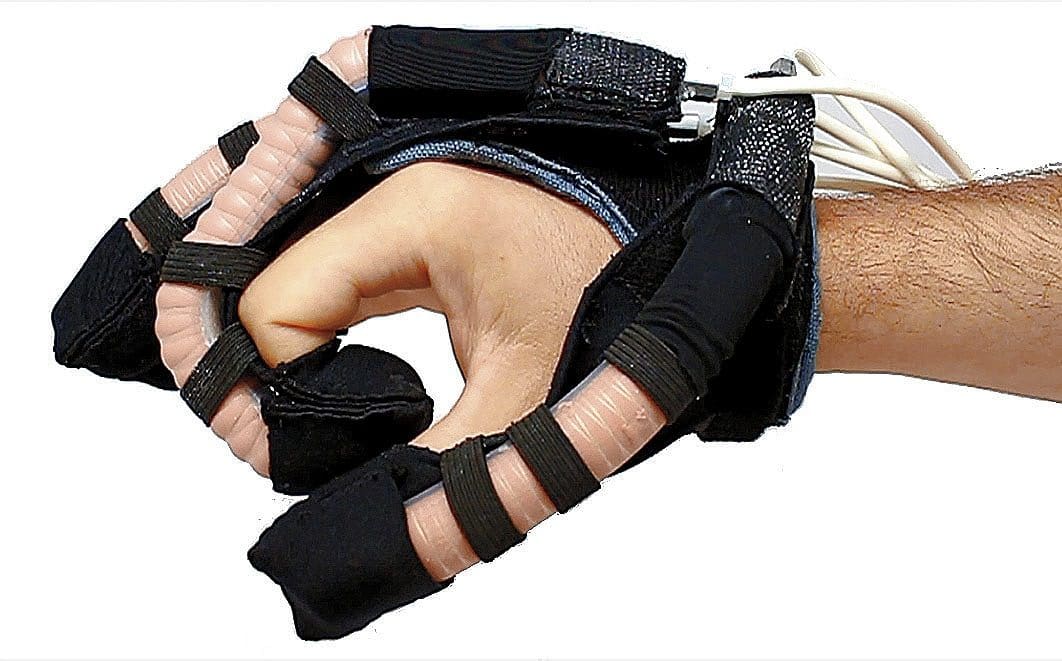United States (Boston)
“Humans are optimised to walk very efficiently. However, people with disabilities often have reduced function of their muscles.”
At Wyss Institute at Harvard University, Founding Core Faculty Member Conor Walsh is studying the biomechanics and physiology of human walking trying to understand what makes it such an efficient process. He has applied that knowledge to the design of biologically-inspired soft wearable robots that work in parallel with the body’s muscles and tendons to mimic their function and aid human movement. “Our goal is to apply small amounts of assistance to positively impact the mobility of both healthy people and people with disability,” he says.
Soft and lightweight, Walsh’s ‘soft exosuits’ can be built into the fabric of clothes. Funded by the Defense Advanced Research Projects Agency, they are a comfier alternative to ‘Iron Man’-type conventional exoskeletons for soldiers, meant to help fighters to carry heavy loads over long distances. Called ‘exoskeletons’ because they typically used rigid outer frames for support, their restrictive machinery can add to the load.
With soft exosuits, adjustable straps of nylon, polyester and spandex are placed strategically along the legs, connected to boots at the heel, to make the suit feel more natural. Insole sensors send signals to a box clipped onto a backpack or waist belt. Motors and pulleys provide bursts of power and acceleration sensors help monitor the wearer’s gait to deliver assistance at the optimal times. “We’re not trying to make sure that we carefully move the leg to a precise position,” Walsh adds. “Rather, we just want to give a little kick or burst at the right time.”
Soft robots will assist those with muscle weakness or patients who suffer from physical or neurological disorders. Walsh’s team is also designing a fluid-powered glove that uses silicon-based inflatable tubes for hand rehabilitation, to mimic the motion of fingers. The robotic glove could supplement physical-therapy exercises, aiding patients who have difficulties with motor control.
“To be able to show that we can actually make systems that can be functional, yet soft, is super interesting,” Walsh says. “It opens lots of fundamental research questions that span materials science, robotics and biomechanics.”
In this video, his team explains how the exosuit can restore the mobility of those with impairments.
Soft Exosuits was mapped by Cecilia Laschi in her Soft Robotics AtlasChart Top 5 – a trip through the flexible future of soft robotics from Italy to South Korea.
Project leader
Conor Walsh, Founding Core Faculty Member, Wyss Institute at Harvard University
Support the Atlas
We want the Atlas of the Future media platform and our event to be available to everybody, everywhere for free – always. Fancy helping us spread stories of hope and optimism to create a better tomorrow? For those able, we'd be grateful for any donation.
- Please support the Atlas here
- Thank you!
Learn more about the exosuit and soft robotic glove in this podcast from the Wyss Institute.





My mother suffered a stroke and has no use from both hands.Her fingers are contracted ? How can I get this ?. Thank you looking forward for your soon reply.